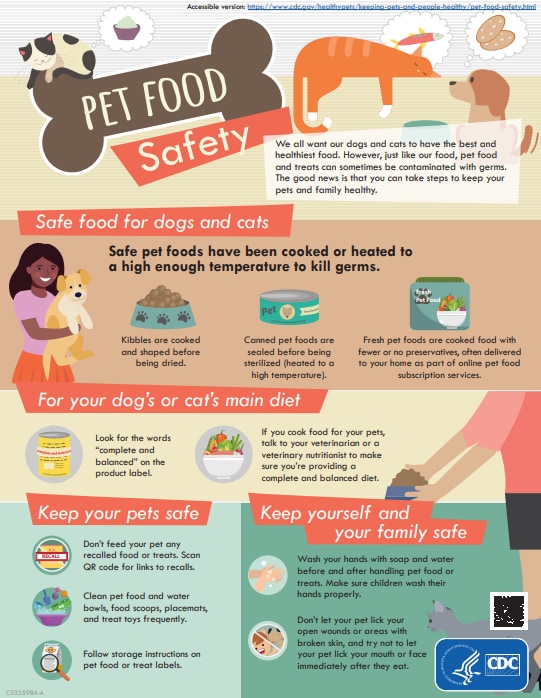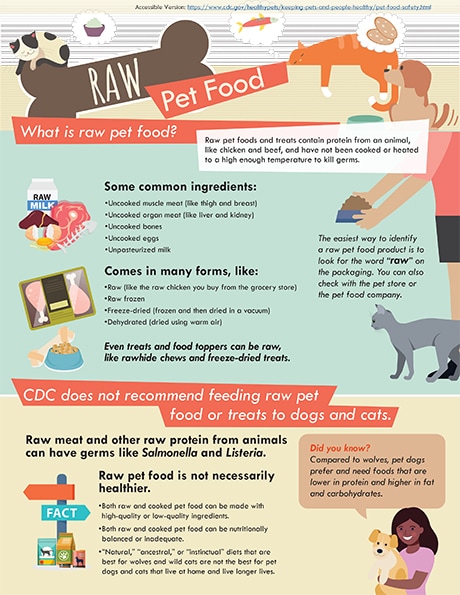What to know
- Pet food and treats can sometimes be contaminated with germs that make people and pets sick.
- CDC does not recommend feeding raw pet food or treats to dogs and cats.
- Talk to a veterinarian for advice on how to maintain a safe and healthy diet for your pet.
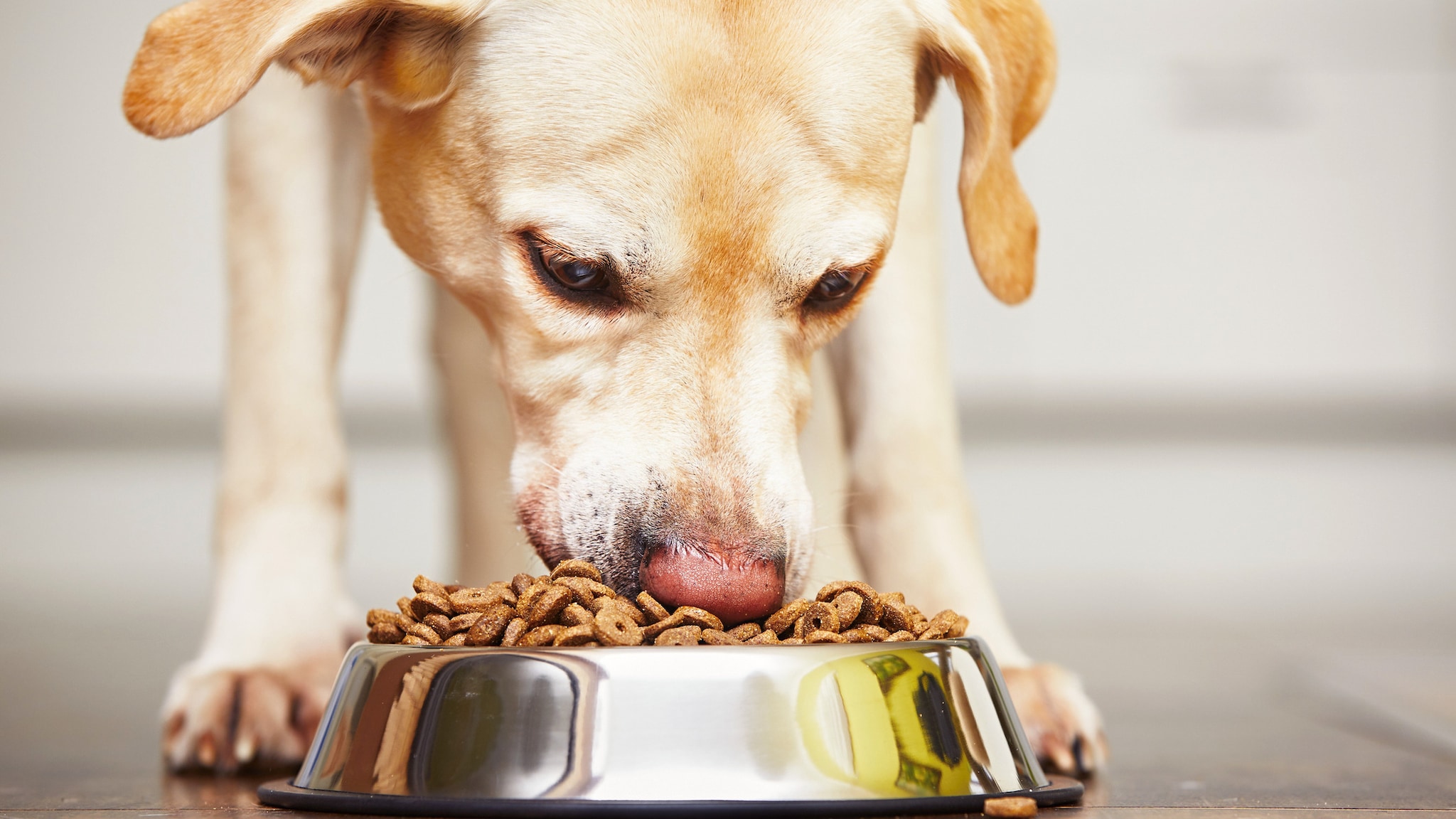
Overview
We all want our dogs and cats to have the best and healthiest food. However, just like our food, pet food and treats can sometimes be contaminated with germs. These germs can make pets and people sick.
The good news is that you can take steps to keep your pets and family healthy.
Safe food for dogs and cats
There are many safe food options for your dog or cat. Safe pet foods rarely cause food poisoning in pets. These foods have been cooked or heated to a high enough temperature to kill germs.
Choose pet foods that provide the right amount of nutrients your pet needs. Look for the words "complete and balanced" on product labels, when buying food for your dog's or cat's main diet.
Main types of safe pet food
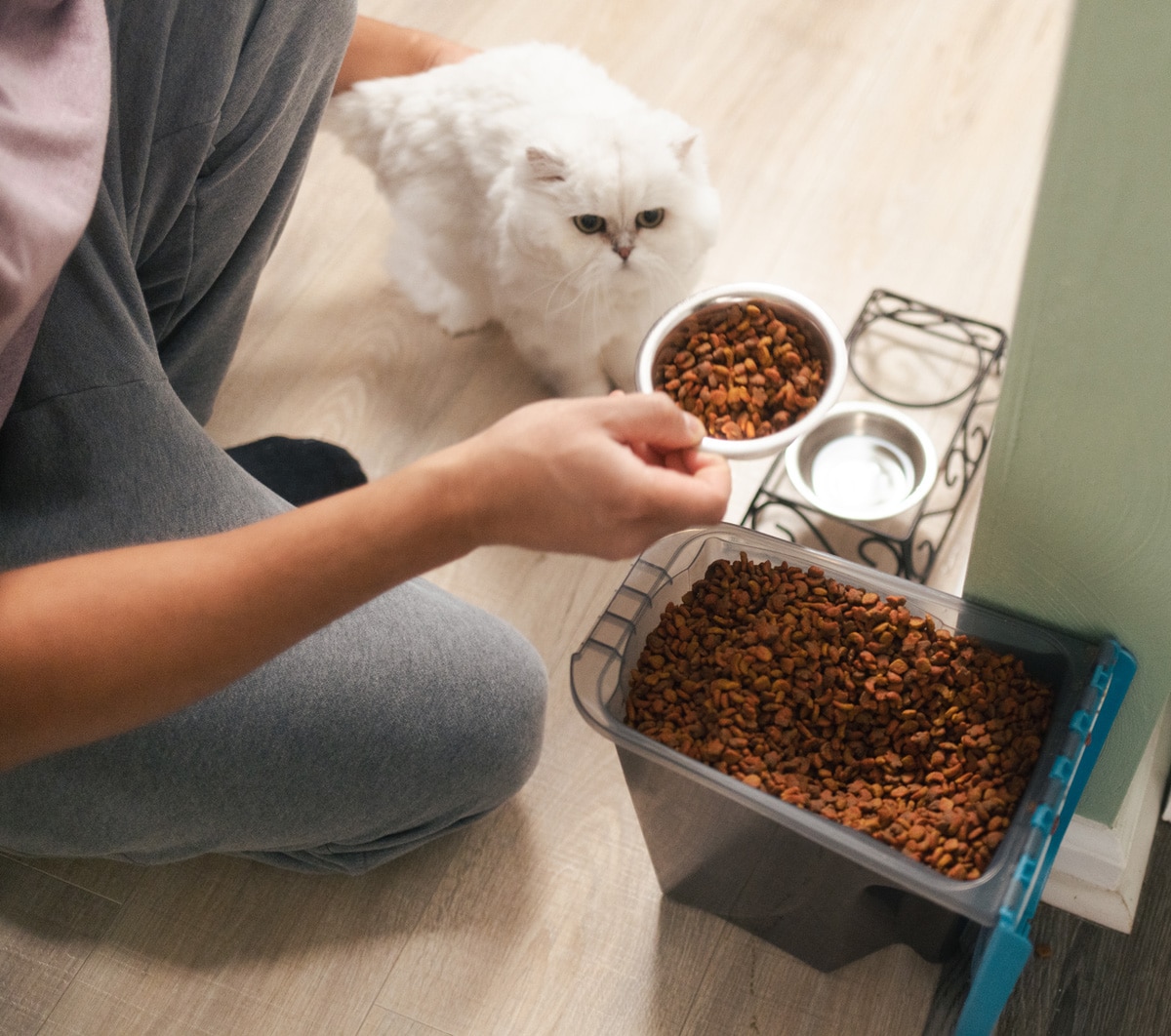
Kibbles
Kibbles are cooked and shaped before being dried. They are then coated with flavors.
Note that some kibbles are coated or mixed with raw pet food. These products would be considered raw pet food and would likely have the word "raw" on the packaging.
Canned pet foods
Canned pet foods are sealed before being sterilized (heated to a high temperature).
Fresh pet foods
Fresh pet foods are cooked food with fewer or no preservatives. These products are often delivered to your home as part of online pet food subscription services. They may also be available at pet stores and grocery stores. Because fewer or no preservatives are used, fresh pet foods need to be refrigerated. This also means they do not keep as long as kibbles or canned pet foods.
Homemade pet foods
Some people make food for their pets using ingredients from the grocery store. Talk to your veterinarian or a veterinary nutritionist If homemade pet foods are your pet's main diet. They will help ensure you are providing a complete and balanced diet for your pet.
Follow pet food safety steps
Keep your pets safe
- Don't feed your pet recalled or contaminated food.
- Clean pet food and water bowls, food scoops, treat toys, feeding mats, and placemats frequently.
- Follow storage instructions on pet food labels.
Stay up to date on food recalls and outbreaks.
- FDA animal product recall website
- AVMA Recall Watch T account
- Other food recalls and outbreaks: CDC foodborne outbreak website
Keep yourself and your family safe
Wash your hands with soap and water before and after handling pet food or treats. Adults should supervise children to ensure they wash their hands properly.
Don't let your pet lick your open wounds or areas with broken skin. Try not to let your pet lick your mouth or face immediately after they eat.
Raw pet food
Raw pet food and treats can make your dog or cat sick. This is why CDC does not recommend feeding raw pet food or treats to dogs and cats.
What is raw pet food?
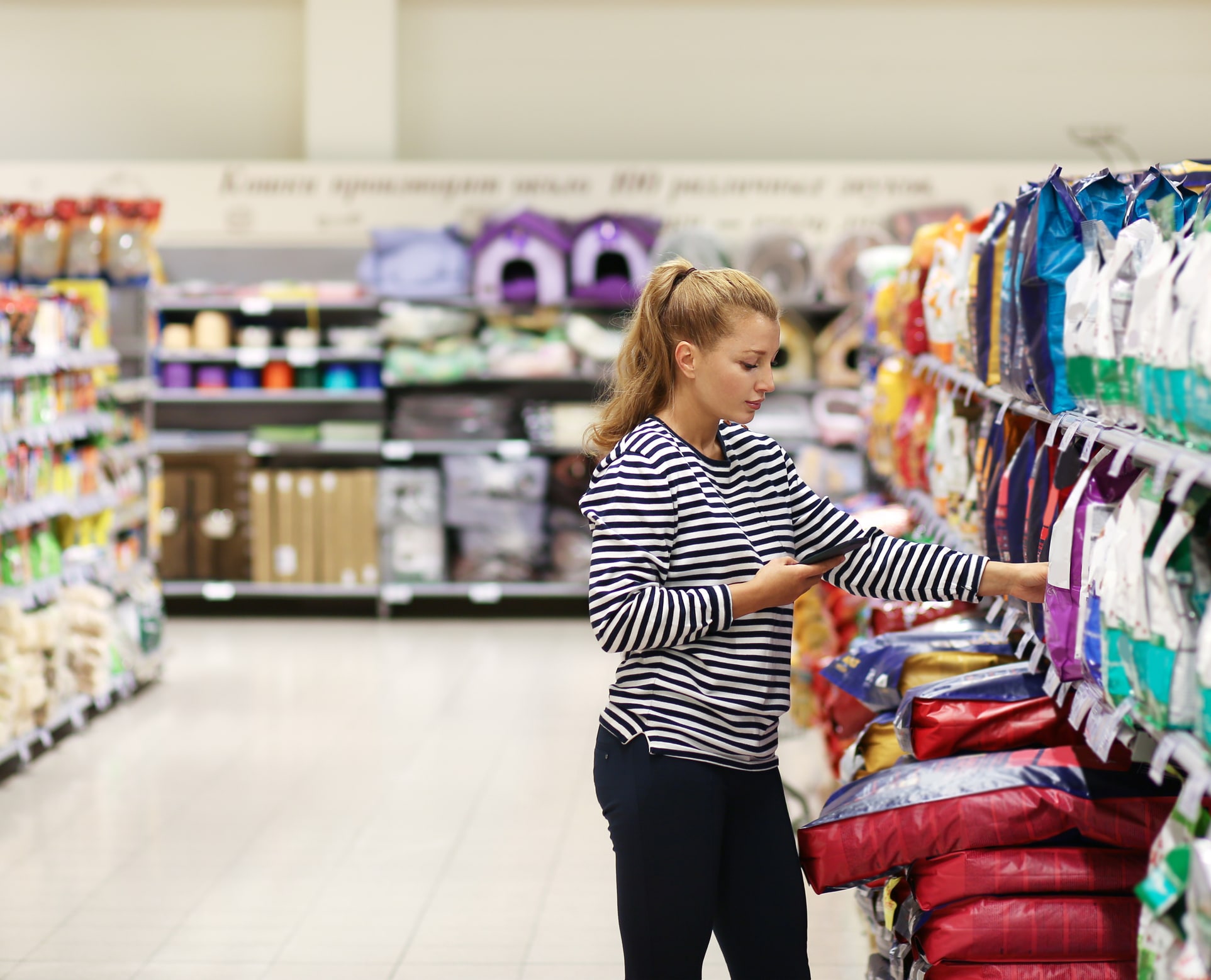
Raw pet foods contain uncooked animal protein that has not been heated to a high enough temperature to kill germs. This protein typically comes from animals like chicken and beef.
Plant-based foods, like fruits and vegetables, are less likely to be contaminated with germs. They are not considered raw pet food.
Some pet food companies use high-energy beams (irradiation) and very high pressure (high pressure processing) to kill germs without heat. However, we currently don't have enough information about how well pet food processing facilities are using these processes. Therefore, these products are still considered to be raw pet food.
Raw ingredients in pet food
Common ingredients in raw pet food include:
- Uncooked muscle meat (like thigh and breast)
- Uncooked organ meat (like liver and kidney)
- Uncooked bones
- Uncooked eggs
- Unpasteurized milk
Forms of raw pet food
Raw pet foods come in many different forms, such as:
- Raw (like the raw chicken you buy from the grocery store)
- Raw frozen
- Freeze-dried (frozen and then dried in a vacuum)
- Dehydrated (dried using warm air)
Even treats and food toppers can be raw. Food toppers are foods that are added to or mixed in with your pet's regular food. Examples of raw treats and food toppers are rawhide chews and freeze-dried treats.
Raw pet food can cause food poisoning
Raw pet food can make your dog or cat sick. This is because raw meat and other raw protein from animals can have germs like Salmonella and Listeria. These germs have been found in several raw pet foods.
Raw pet food can also make you and your family sick when these germs spread around your kitchen and home.
Freeze-drying, dehydrating, or freezing raw protein from animals only reduces the amount of germs. These processes do not kill all germs that might be on the food.
Raw pet food is not necessarily healthier
Raw is not necessarily healthier. Both raw and cooked pet food can be made with high-quality or low-quality ingredients. Both can be nutritionally balanced or inadequate.
Both raw and cooked preparations can be digestible. Some nutrients can be more easily digested after the food is cooked while others may be more digestible in raw food. For example, cooking breaks down thiaminase, a harmful enzyme, in seafood and prevents thiamine deficiency in cats.
Some people may say raw pet food is the natural, ancestral, or instinctual diet of dogs and cats. However, diets that are optimal for wolves and wild cats are different from pet diets. Dogs and cats that live at home and live longer lives have different dietary needs. In fact, pet dogs prefer and need foods that are lower in protein and higher in fat and carbohydrates than wolves.
If you're thinking about feeding raw food to your pet
Talk to your veterinarian first if you're thinking about feeding raw pet food to your dog or cat. They can help you decide what is best for your pet and family.
Consider some of the questions below when discussing with your veterinarian.
People at risk for serious illness
Is anyone in your household, or that interacts with your pet, more likely to get very sick from foodborne germs? This includes:
- Children under 5 years old
- Adults 65 years or older
- People with weakened immune systems
- Pregnant women
Pets at risk for serious illness
Do you have a pet that is more likely to get sick from foodborne germs? This includes young pets (like puppies) and pets who have a weakened immune system or other health conditions.
Balanced diet
Is the raw diet you plan to feed your pet complete and balanced? Will it help your pet thrive?
More frequent cleaning
Are you able to clean more frequently if you use raw pet food?
If you feed raw food to your dog or cat
Consider the steps below if you choose to feed your dog or cat raw pet food.
Buy from credible companies
Consider buying from companies that have high food safety standards. You can ask them:
- Does your company test all your final products for common foodborne germs like Salmonella, E. coli, and Listeria?
- What does your company do to kill germs in your raw pet food products?
- How often does your company clean and disinfect the manufacturing facility?
- Does your company have veterinary nutritionists?
Consult your veterinarian
Talk to your veterinarian or a veterinary nutritionist if raw food is your pet's main diet. They can help you make sure your pet's raw food diet has all the nutrition your pet needs.
Clean often
Wash your hands with soap and water before and after handling raw pet food. Clean items and surfaces that touched raw pet food.
Store food properly
Properly chill and store raw pet food that needs to be kept cold. Freeze it until you are ready to thaw and use it. Thaw frozen raw pet food in the refrigerator. Keep it in a sealed container in the freezer and refrigerator, separate from other foods.
Throw away leftovers that have been out at room temperature.

